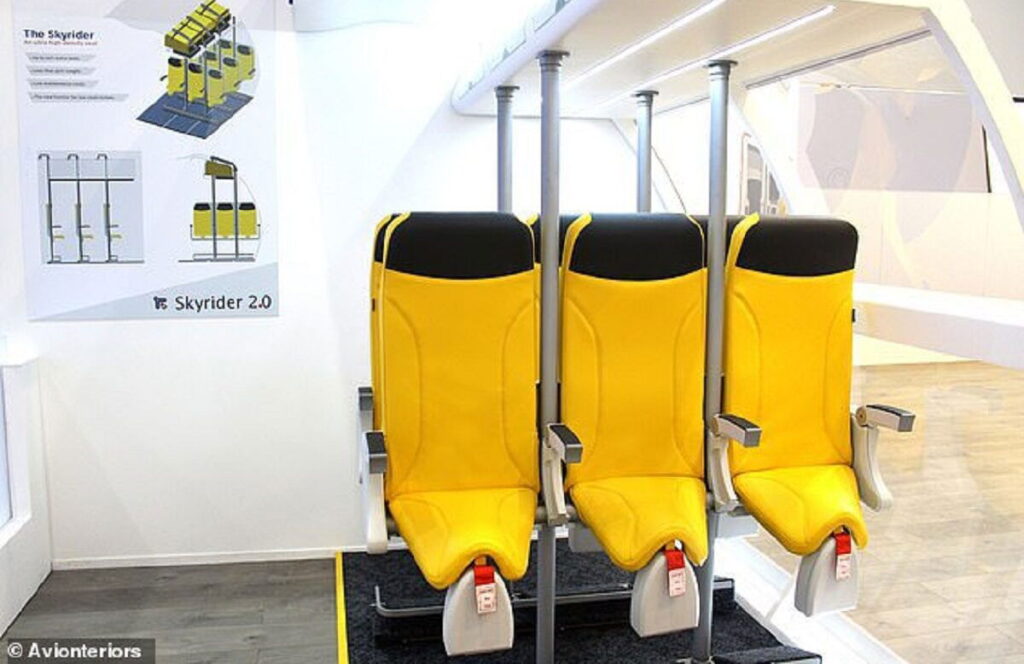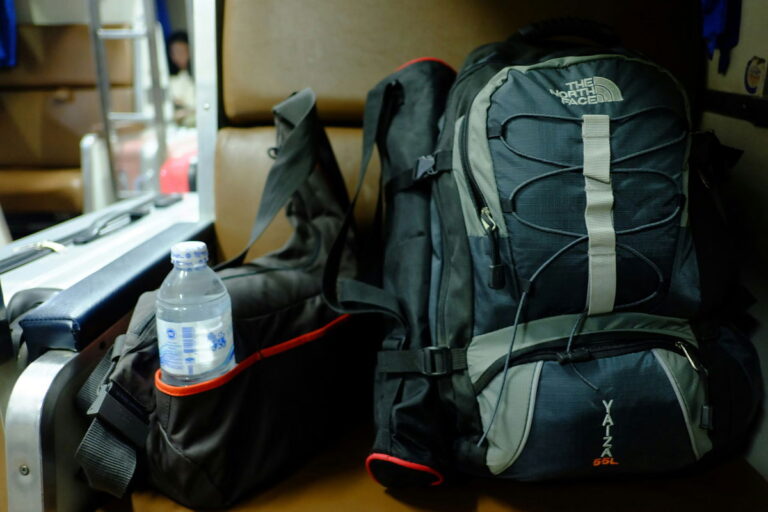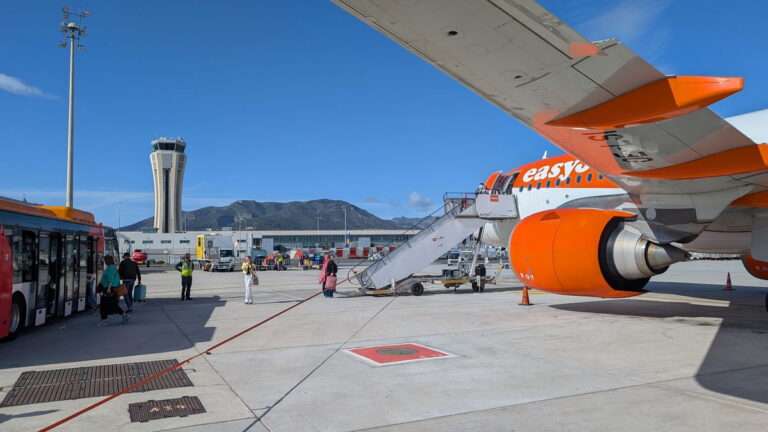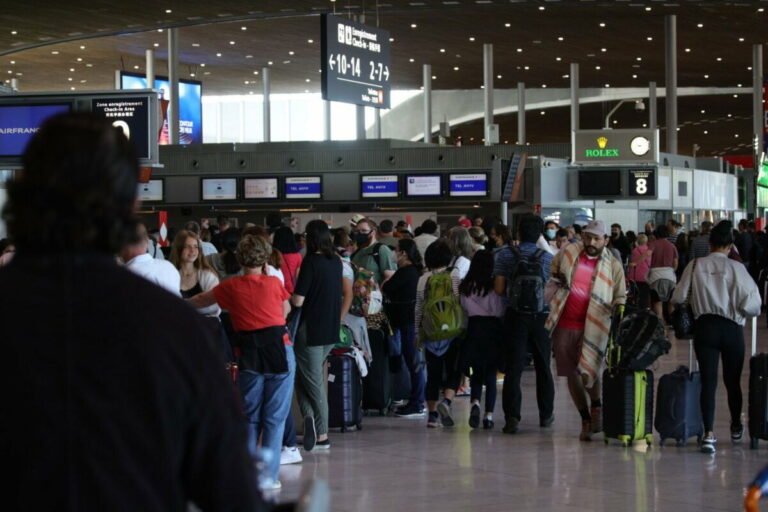
The Italian seat design company behind one of aviation’s most controversial concepts — the Skyrider 2.0 “standing seat” — has revealed what the experience is really like, even as critics blast the idea as inhumane.
Starting with 2026, these standing-only seats could be used by low-cost airline companies. Aviointeriors, best known for crafting luxury business class seating for private jets and commercial airlines, has been working on the standing-style design since 2010.
But despite years of development, even the company’s own team hasn’t spent long trying it!
What is it actually like? “I only sat in it for five minutes”
A spokesperson for the company spoke with MailOnline Travel, saying that company staff had tested the design internally, but with mixed reviews.
“I only sat in it for five minutes,” the spokesperson admitted. “I obviously haven’t travelled in those seats for a long time. I ride horses, so for me, it felt comfortable. Who knows whether if you sat in it for two hours or three hours how that would feel?”
The Skyrider design seats passengers in a near-standing, saddle-like position, with vertical supports connecting to the floor and ceiling. The minimalist structure drastically reduces seat pitch — allowing airlines to fit up to 20% more passengers on a plane.
The goal? To slash operating costs and ticket prices. The seat weighs 50% less than typical economy seating and has fewer components, translating to lower maintenance costs.
But the vision has not ‘landed’ well with many.
Controversy takes off online
Since its earliest reveal in 2012 — when Ryanair CEO Michael O’Leary floated installing 10 rows of the seats to sell tickets for €1 — the concept has sparked waves of criticism.
Social media users have compared the seat to “slave ship seating”, called it “pathetic”, and joked that passengers might soon be “strapped to the wing with an oxygen mask.”
In response to the backlash, Aviointeriors clarified on Instagram: “For now, the Skyrider is not part of our official lineup.”
Yet the company continues refining the prototype, which remains on display at its headquarters in Latina, near Rome.
Not cleared for takeoff — Yet
Despite the online buzz and theoretical benefits, Skyrider 2.0 has not received regulatory approval and cannot be used on commercial flights under current safety standards. That approval is unlikely to come before 2026.
Until then, the idea of “standing” on a flight remains grounded in controversy, and even its designer has barely tested how it feels.
Read here more travel news.






